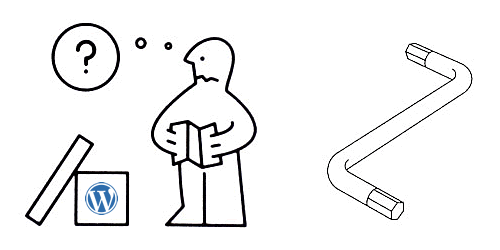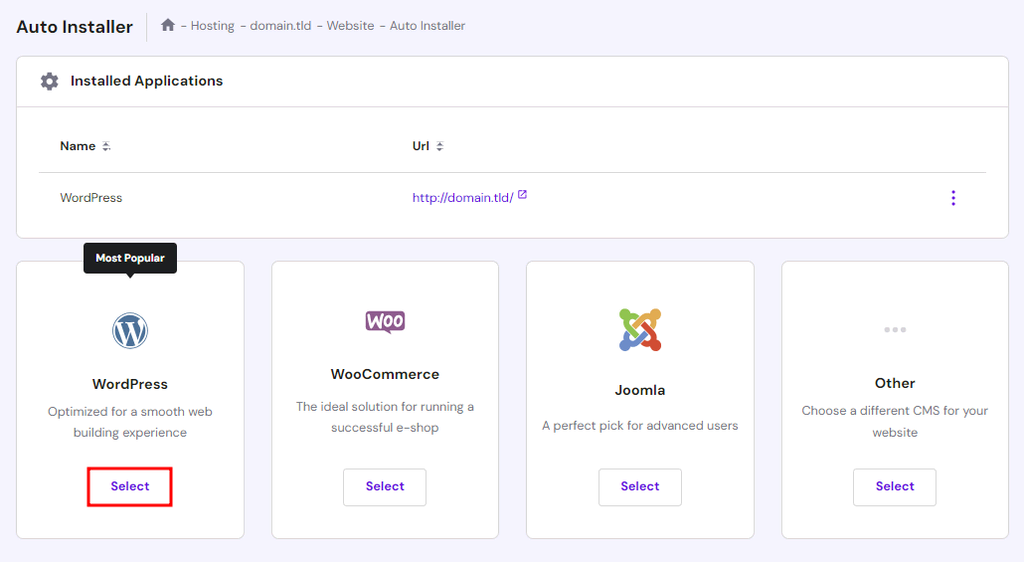☑︎ Dieses Review wurde zuletzt aktualisiert im December 2025
Mal ehrlich:
Die meisten Tools zur Website-Erstellung sind entweder 🪀 Spielzeug mit Baukasten-Flair, ein Wust aus 🛠️ Plugins, Problemumgehungen und Geduldsproben (hallo WordPress!) – oder 😵💫 Code-Labyrinthe, bei denen jedes Projekt bei null anfängt.
Webflow will genau dieses Dilemma auflösen:
Die Plattform verspricht den heiligen Gral: mächtig genug für Developer, visuell genug für Designer, und gerade noch verständlich für alle anderen – mit etwas Geduld.
Aber stimmt das?
Wir verwenden Webflow seit 2016 – für Kundenprojekte, eigene Seiten und viele kleine Experimente. Dieses Review ist das Resultat dieser Reise.
Wir zeigen dir die 😇 Highlights, die 🤬 Schwächen und die 👹 “Wie bitte?!”-Momente (schaut euch mal diese Preisstruktur an).
Aber zuerst – hier das Kurzfazit:
9/10
CMS: flexibel & benutzerfreundlich?
Mehr dazu
8/10
9/10
6/10
7/10
Wenn du dich je zwischen Drag-and-Drop-Bequemlichkeit und vollwertigem Code gefragt hast, ob es da draußen nicht doch eine goldene Mitte gibt – könnte Webflow genau diese Brücke sein.
Lass uns herausfinden, ob sie trägt:
Was genau ist Webflow?
Kurz gesagt?
Webflow ist eine All-in-One-Plattform für Webentwicklung, mit der du Websites gestalten, bauen und veröffentlichen kannst – ganz ohne Code. Außer du willst!
Man könnte sagen, es ist das 👼 Liebeskind aus Figma, WordPress und VS Code:
Du ziehst, du platzierst, du justierst – und im Hintergrund generiert Webflow automatisch HTML, CSS und JavaScript auf Produktionsniveau.
Doch im Gegensatz zu anderen No-Code-Tools, die Technik lieber hinter Glitzer und Icons verstecken, setzt Webflow auf echtes Frontend-Verständnis – nur eben visuell umgesetzt.
Wenn du weißt, wie Margins, Flexbox oder Breakpoints funktionieren (oder Lust hast, es zu lernen), wird Webflow für dich zum Raketenantrieb.
Was alles mit dabei ist:
Egal ob du Designer bist und keine Lust mehr auf Entwickler-Abhängigkeit hast, oder Developer und einfach schneller Prototypen bauen willst – Webflow ist eines der wenigen Tools, wo sich beide Welten auf halbem Weg treffen können.
⚡ Was ist neu in 2025?
Seit dem Start 2013 hat sich bei Webflow einiges getan – hier die spannendsten Neuerungen:
- Localization
2.0: endlich native Mehrsprachigkeit mit automatischer Subdirectory-Struktur und stringbasiertem Übersetzungseditor
- Components
Update: wiederverwendbare Komponenten unterstützen jetzt Bedingungslogik und dynamische Slots – ideal für komplexe Layouts
- DevLink
Beta: engere Integration mit React für Teams, die Webflow als visuelles Frontend für eigene Apps nutzen
- Memberships
1.0: baue Login-Bereiche, gated Content oder sogar kostenpflichtige Mitgliederpläne – alles direkt in Webflow
- Verbesserte Figma-Integration: überarbeiteter Plugin erlaubt direkteren Export mit besserer Layout- und Stilübernahme
Wie sich diese Features auf echte Projekte auswirken, zeigen wir in den jeweiligen Abschnitten – oder du springst direkt zu unserem Fazit.
Im nächsten Schritt sehen wir uns die wichtigsten Bausteine von Webflow im Detail an:
Webflow Site Designer: Einfachheit trifft Präzision
Das Herzstück von Webflow ist der Designer – eine visuelle Oberfläche, mit der du Websites bis auf den letzten Pixel gestalten kannst.
Aber im Gegensatz zu klobigen Drag-and-Drop-Baukästen respektiert Webflow, wie das Web wirklich funktioniert: jede Sektion, jedes Div, jede Stiländerung wird im Hintergrund direkt in sauberes HTML, CSS und JavaScript übersetzt ✨
Du bekommst also volle Kontrolle über alles…
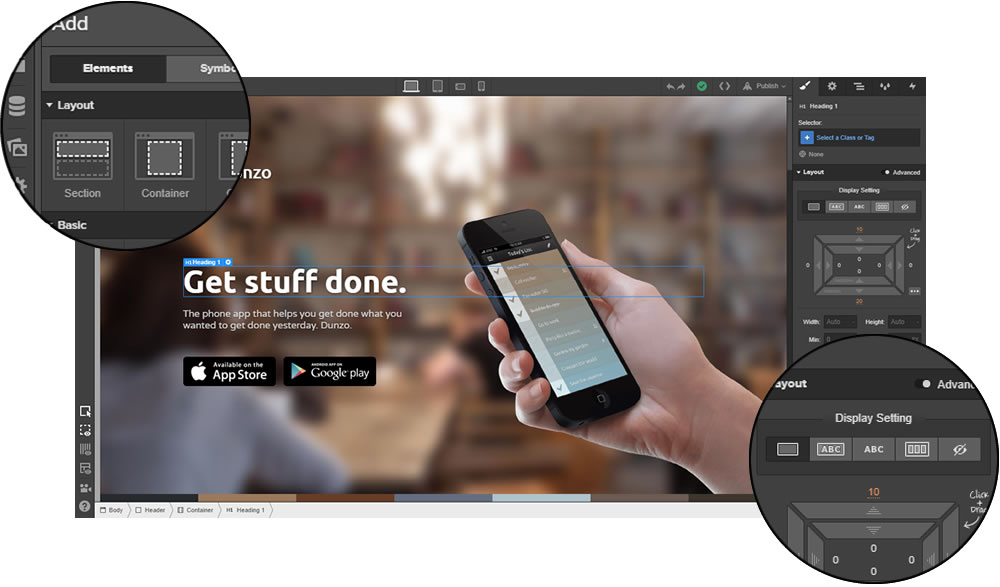
…aber das bedeutet auch: du solltest verstehen, wie Webseiten aufgebaut sind (oder zumindest bereit sein, es zu lernen).
Die gute Nachricht?
In 2025 gibt es drei verschiedene Wege, ein neues Webflow-Projekt zu starten – von einsteigerfreundlich bis komplett hands-on:
-
🧠 AI Site Builder
Beta: Die neueste – und wahrscheinlich umstrittenste – Option:
Beschreibe, welche Art von Website du willst, wähle einen Stil, und Webflows KI erstellt dir automatisch eine vollständige Homepage (oder ein ganzes Multi-Page-Layout) – mit echten Sektionen, Dummy-Content und brauchbarer Gestaltung.
Einzigartig in 2025? Nö. Aber für schnelle Wireframes, MVPs oder kreative Blockaden absolut nützlich.
Das Ergebnis ist nicht perfekt – aber ein solider Ausgangspunkt, den du komplett im Designer anpassen kannst.
-
🎨 Start mit Vorlage: Wenn du das Grundgerüst überspringen und direkt loslegen willst, bietet Webflow eine Bibliothek mit über 100 Vorlagen (ca. 30 kostenlos, der Rest kostenpflichtig).
Manche sind minimal und schnell, andere enthalten Animationen, CMS-Strukturen und komplette Unterseiten – von einfachen Themes für private Projekte bis zu Premium-Vorlagen ($40–80), die von Profis aus der Webflow-Community gebaut wurden.
Natürlich sind alle Templates vollständig editierbar – du kannst also Layout, Farben, Inhalte und Responsivität komplett nach deinem Stil anpassen.
-
💻 Blank Canvas (a.k.a. echtes Webflow-Modus): die klassische Webflow-Erfahrung – für alle, die maximale Kontrolle wollen.
Du beginnst mit einer leeren Seite und ziehst Layout-Bausteine wie Sections, Container, Grids, Flexboxen oder Div Blocks hinein – dazu Texte, Bilder, Buttons, Formulare, Videos oder Custom Embeds.
Jeder Pixel, jede Animation, jeder Media Query ist deine Entscheidung. Aber auch deine Verantwortung – denn du baust die Struktur selbst:
Du willst ein zentriertes Kästchen? Dann erstelle ein div, setze es auf „relative“, gib ihm Maße – willkommen im echten Web, mein Freund.
Wenn das abschreckend klingt: keine Sorge – Webflow bietet Hilfen und visuelle Kontroll-Elemente (inkl. CSS-Menüs und Gerätevorschau), die dich Schritt für Schritt durchleiten.
Webflow Site Designer ausprobieren ›
Das Panel Interaktionen macht es kinderleicht, Hover-Effekte, Scroll-Reveal, Page-Load-Animationen und Klick-Trigger zu erstellen – ganz ohne JavaScript (es sei denn, du willst natürlich!).
Auch das responsive Design-System von Webflow gehört zu den besten am Markt:
- Alle wichtigen Breakpoints (Desktop, Tablet, Mobile quer & hochkant) sind eingebaut
- Stile für jede Bildschirmgröße können visuell angepasst werden – und Änderungen vererben sich automatisch, ganz wie in echtem CSS
- Du kannst sogar eigene Breakpoints definieren, falls die Standardansicht mal nicht reicht
Und falls du dich beim Anmelden als „kein Coder“ markierst, übernimmt Webflow sogar mobile Stile für dich automatisch.
Fazit: Egal ob du mit KI, Vorlage oder leerem Blatt startest – Webflow gibt dir alles an die Hand, um deine Website wirklich zu deiner eigenen zu machen.
Im nächsten Schritt schauen wir uns an, wie Webflow Inhalte strukturiert:
Webflows Content Management System
Eine Website besteht nicht nur aus Boxen und Buttons – sie lebt von Inhalten.
Und das CMS von Webflow hilft dir, diese Inhalte wie ein Profi zu strukturieren – selbst wenn du noch nie ein Backend gesehen hast 🫣
Im Gegensatz zu klassischen Baukästen, bei denen alles statisch ist – oder WordPress, wo du bei jedem Update hoffen musst, dass dein Plugin-Stapel nicht implodiert – setzt Webflow auf einen visuellen, aber schema-basierten Ansatz zur Inhaltsverwaltung.
Denk an: Notion trifft Airtable… aber fürs Web.
Das zentrale Element sind die sogenannten Collections – wiederverwendbare Inhaltstypen, die du komplett selbst definieren kannst. Jede Collection enthält beliebige Eigenschaften bzw. Felder, die du nach Bedarf festlegst.
Beispiele gefällig?
- Blogartikel mit Titel, Autor, Veröffentlichungsdatum, Vorschaubild, Tags und Hauptinhalt
- Portfolio-Projekte mit Bildergalerien, Links, Kundenstimmen und Kategorien
- Teammitglieder mit Funktion, Avatar, Kurzbiografie und Social Links
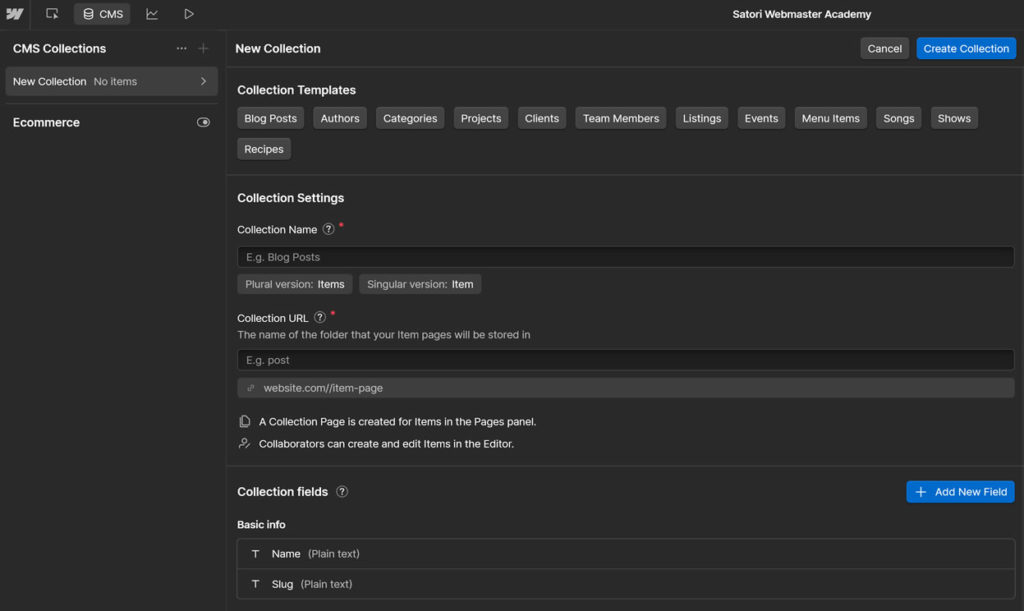
Sobald du eine Collection erstellt hast, kannst du:
- Dynamische Seiten automatisch generieren, z.B.
/blog/webflow-tutorial
- Collection-Inhalte in beliebigen Listen, Grids oder Slidern anzeigen – mit Filter- und Sortierfunktion basierend auf jedem beliebigen Feld
- Layout-Blöcke mithilfe von konditionaler Sichtbarkeit ein- oder ausblenden – je nach Inhalt
Das Beste: All das funktioniert visuell – ohne Datenbanken, ohne PHP-Funktionen, ohne Plugins für „benutzerdefinierte Beitragstypen“.
…Und für alle, die trotzdem die Kontrolle brauchen: Ja, das CMS von Webflow lässt sich via API oder Embeds auch mit externen Tools verbinden.
Der Webflow Editor
Für die laufende Bearbeitung von Inhalten (nach Veröffentlichung deiner Seite) gibt es den Webflow Editor – ein schlanker Frontend-Modus für Content-Updates.
Man kann ihn sich als „Kundenfreundlicher Modus“ vorstellen:
🖱️ Text oder Bild direkt auf der Live-Seite anklicken und bearbeiten
➕ Füge neue Collection-Einträge hinzu – ohne in den Designer zu müssen
🔒 Das Layout bleibt geschützt, während Kunden Inhalte ändern können
Ideal für Solo-Creators, kleine Teams – oder Kunden, die bloggen möchten, ohne das Design zu berühren.
Mehrsprachigkeit? Jetzt nativ integriert
Lange Zeit war Mehrsprachigkeit ein leidiges Thema in Webflow – man musste Drittanbieter wie Weglot nutzen oder komplizierte Workarounds basteln.
Doch das hat sich mit Localization 2.0 geändert:
🌐 Definiere Sprachen und eigene Subdirectories (z. B. /de/, /fr/)
🈯 Übersetze einzelne Felder, Bilder und SEO-Metadaten je Sprache
🔁 Wechsle die Sprache visuell über Dropdowns oder dynamische Links
Wichtig: Dieses Feature ist derzeit kostenpflichtig – funktioniert aber nativ und nahtlos im Zusammenspiel mit dem CMS. Ein riesiger Fortschritt im Vergleich zu früher.
Fazit: Das Webflow CMS deckt locker 90 % von dem ab, was ein „Headless CMS“ kann – nur ohne die Kopfschmerzen.
Nächster Schritt – wie bringt man seine Meisterwerke live? 🛰️
Veröffentlichung und Hosting
Mit Webflow veröffentlichst du deine Website buchstäblich per Klick. Kein Witz – Deployment ist direkt in die Designer-Oberfläche integriert:
– einfach auf „Publish“ klicken, Staging- oder Produktionsdomain auswählen – und deine Seite ist in wenigen Sekunden live.
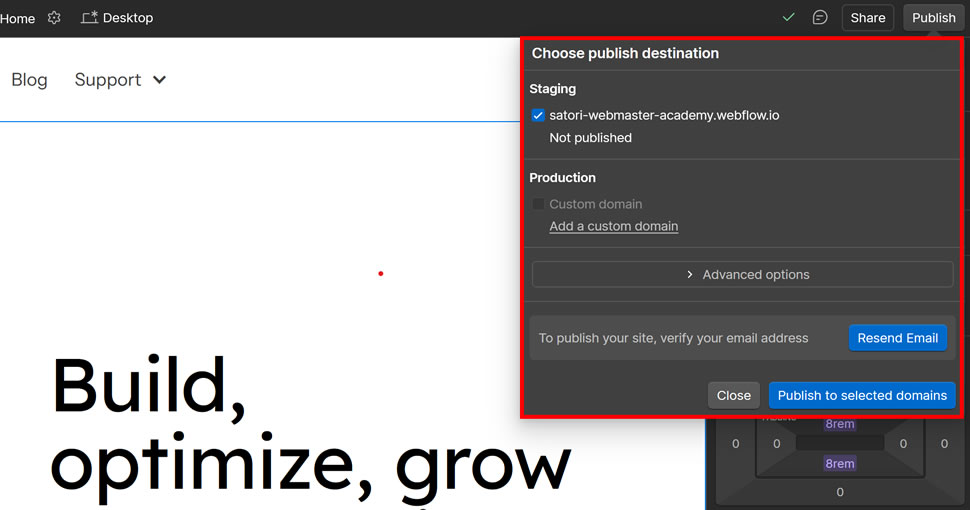
Kein cPanel. Kein FTP. Keine DNS-Albträume (okay, vielleicht einmalig, aber das DNS-Panel von Webflow gehört zu den übersichtlichsten überhaupt).
Du kannst veröffentlichen auf:
- eine 💸 kostenlose Staging-Subdomain wie
[deineseite].webflow.io
- jede eigene Domain über DNS-Einträge
- mehrere Umgebungen gleichzeitig – falls du ein höheres Abo hast
Nach dem Deployment läuft deine Website auf Webflows globaler Infrastruktur – hier ein Blick unter die Haube:
Was steckt technisch dahinter?
Webflow Hosting wird betrieben über Amazon Cloudfront und Fastly – zwei Schwergewichte in Sachen Performance und Verfügbarkeit:
- Automatisch skalierbare Infrastruktur: kein Server-Upgrade nötig, auch nicht bei Traffic-Spitzen
- SSL inklusive: jede Seite erhält automatisch ein kostenloses, dauerhaft aktives HTTPS-Zertifikat
- Intelligentes Caching: Inhalte werden weltweit in Sekunden aktualisiert – ganz ohne manuelle Cache-Verwaltung
Das ist kein Shared Hosting und auch kein „Managed WordPress“ – es ist eher 🚀 Enterprise-Cloud ohne DevOps-Aufwand.
In dieser Hinsicht orientiert sich Webflow eher am Website-Builder-Prinzip: kein Server-Setup, keine Plugin-Updates, keine Kompatibilitäts-Patches –
es funktioniert einfach.
Fazit: Webflow Hosting liefert dir Geschwindigkeit, Skalierbarkeit und Sicherheit – ganz ohne Aufwand. Du klickst „Publish“ – und es ist live.
Als Nächstes: Wie gut funktioniert Webflow fürs Verkaufen im Netz?
Webflow eCommerce: Noch nicht ganz Shopify – aber nah dran
Eines der meistgewünschten Features in der Webflow-Geschichte? Verkaufen können.
Und ja – Webflow eCommerce ist inzwischen voll in die Plattform integriert. Du kannst damit:
🏪 Eigene Produktseiten erstellen
🛒 Warenkorb- und Checkout-Flows frei gestalten
🖼️ Jedes Detail deines Shops designen – keine starren Vorlagen
🎛️ Produkte, Bestellungen und Mails im gleichen Backend verwalten
Also… kann es Shopify ersetzen?
Noch nicht ganz – aber es kommt näher dran.
Der große Vorteil von Webflow eCommerce ist derselbe wie beim Rest der Plattform: maximale Designfreiheit.
Keine starren Store-Themes. Keine Plugin-Hölle. Du gestaltest jedes Element – von der Produktseite über den Warenkorb bis zu den E-Mails – wie jede andere Webflow-Seite.
Das ist ein Game-Changer, wenn du je mit Shopify Liquid oder WooCommerce CSS-Overrides kämpfen musstest.
Weitere Pluspunkte:
- Unterstützt physische und digitale Produkte
- Eigene Felder für Varianten, technische Daten, Downloads usw.
- Anpassbare Checkout- und Dankeseiten
- Gebrandete Bestellmails und automatische Warenkorb-Erinnerungen
- Integrierte Bezahlung via Stripe und PayPal
Für Designer und produktzentrierte Marken, die Wert auf ein pixelgenaues Frontend legen, ist das fast ein Traum.
Allerdings sollte man nicht verschweigen: Stand 2025 ist Webflow eCommerce noch in Entwicklung – und einige Funktionen fehlen oder sind eingeschränkt im Vergleich zu Shopify oder WooCommerce:
- Kein integrierter Multi-Währungs-Support
- Keine POS-Integration (Point of Sale)
- Keine nativen Abo-Produkte
- Rabatt-Logik (z. B. auf Warenkorbebene) nur eingeschränkt möglich
- Kundenkonten nur über das Memberships-Feature verfügbar
Einige dieser Punkte stehen auf der Webflow-Roadmap – andere könnten nie nativ umgesetzt werden. Wenn du also einen großen Shop mit komplexer Infrastruktur oder POS-Anbindung brauchst, gilt: nimm Shopify und schlaf ruhig.
Aber für kleinere Shops, One-Product-Brands, digitale Produkte oder kreative Custom-Stores mit starkem Designfokus bleibt Webflow extrem attraktiv.
Fazit: Webflow eCommerce eignet sich hervorragend für kleine bis mittlere Shops, bei denen Branding, visuelle Freiheit und Flexibilität wichtiger sind als reine Feature-Masse.
Okay – Zeit für den spannenden Teil: Was kostet das Ganze?
Webflow Preisgestaltung
Ja, Webflows Preisstruktur ist… chaotisch. Aber sie ergibt Sinn – sobald man das Grundprinzip verstanden hat.
Der wichtigste Punkt dabei:
Webflow verwendet ein zweischichtiges Preismodell mit zwei Komponenten: Workspaces für dein gesamtes Konto und Site-Pläne für jedes einzelne Projekt (also jede Website).
Um das Ganze verständlicher zu machen, haben wir diese Grafik erstellt, die alle Webflow-Pläne visuell erklärt:
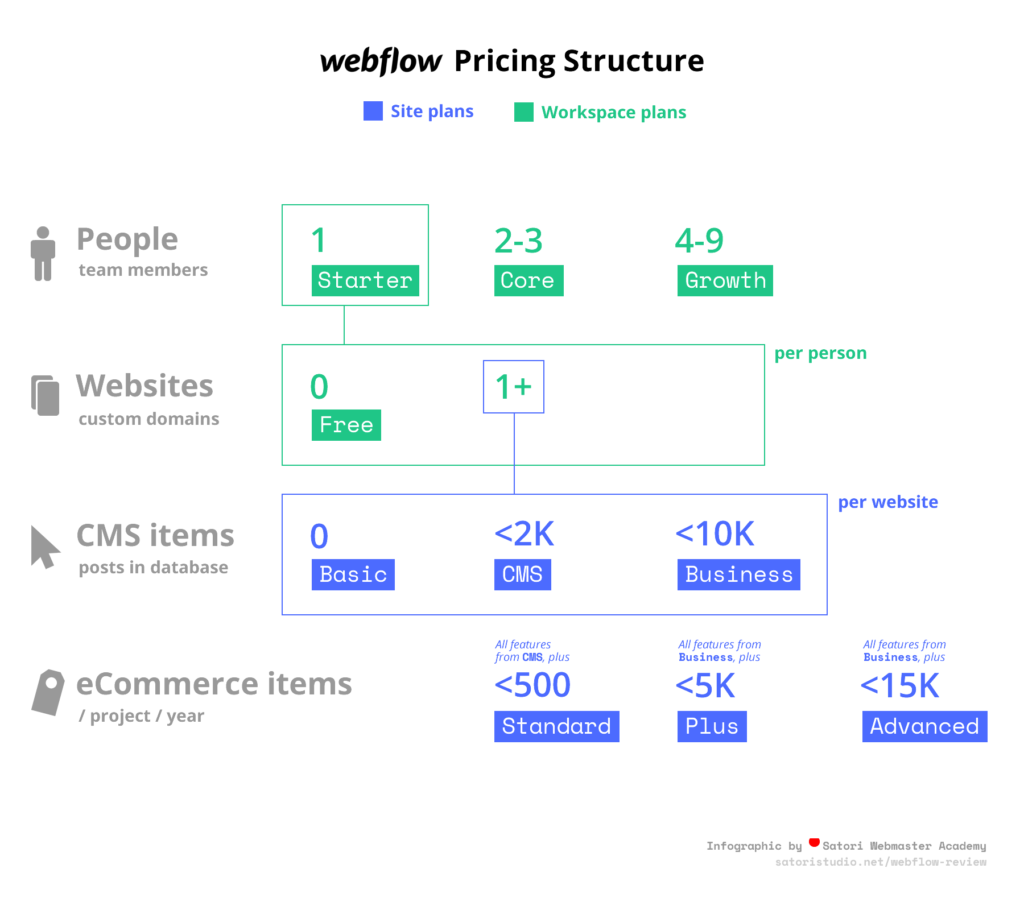
Workspaces dienen dazu, Websites in Gruppen zu organisieren, inklusive getrenntem Zugriff und Teamfeatures – ideal für Agenturen oder Freelancer mit mehreren Kunden.
Wenn du dich anmeldest, bekommst du automatisch 1 Workspace-Sitzplatz, zu dem du beliebig viele Websites hinzufügen kannst.
Site-Pläne (Hosting pro Website)
Hier entscheidet sich, wie viele Seiten, CMS-Inhalte und wie viel Traffic deine Website verkraftet:
- Starter (kostenlos): 2 Seiten, 20 CMS-Sammlungen, 50 CMS-Items, 1 GB Bandbreite, 50 Formular-Einsendungen (lebenslang). Keine eigene Domain möglich.
- Basic – $14/Monat: Ideal für kleine Seiten & Landingpages. 150 Seiten, unbegrenzte Formulare, 10 GB Bandbreite.
- CMS – $23/Monat: Perfekt für Blogs und Content-Websites. 20 Sammlungen, 2.000 Items, 50 GB Bandbreite, Site-Suche, 3 Editor-Zugänge.
- Business – $39/Monat: Für Seiten mit hohem Traffic. 300 Seiten, 40 Sammlungen, 10.000 Items, 100 GB+ Bandbreite, Uploads, 10 Editoren.
- Enterprise: Maßgeschneiderte Lösung für große Projekte – mit unbegrenztem Volumen, SLA und dediziertem Support. Preis auf Anfrage.
Wenn du auf deiner Website Produkte verkaufen möchtest, brauchst du einen separaten eCommerce-Plan:
eCommerce-Pläne (für Online-Shops)
Diese Pläne erweitern die normalen Site-Pläne um Shop-Funktionalität:
- Standard – $29/Monat: Bis zu 500 Produkte, 2 % Transaktionsgebühr an Webflow.
- Plus – $74/Monat: Bis zu 1.000 Produkte, 0 % Webflow-Gebühr.
- Advanced – $212/Monat: Bis zu 3.000 Produkte, 0 % Gebühr, unbegrenzter Umsatz, Team-Zugänge.
Alle Pläne enthalten CMS, Checkout, Warenkorb, Bestell-E-Mails, Stripe/PayPal, Steuerberechnung und Basis-Integrationen. Unterschiede gibt es bei Anzahl der Produkte & Transaktionskosten.
Und jetzt (vorsichtig!) zur zweiten Schicht:
Workspace-Pläne (Zugriff & Zusammenarbeit)
Wie erwähnt, definieren Workspaces wer an welchen Projekten mitarbeiten darf – und mit welchen Rechten:
- Free Seat: Nur Leserechte (z. B. für Feedback oder Kundenkorrekturen).
- Limited Seat – $15/Monat: Eingeschränkte Bearbeitung (z. B. für Redakteure/Marketing).
- Full Seat – $39/Monat: Voller Zugriff: Designer, Einstellungen, Hosting, Abrechnung – alles.
Puh…
Was heißt das jetzt konkret?
- Ein komplettes Team braucht mindestens 1 Full Seat + Site-Plan pro Projekt.
- Persönliche Einzelprojekte kommen auch ohne bezahlten Sitzplatz aus – Site-Plan reicht.
- Für Kunden reicht oft ein Free oder Limited Seat, wenn nur Inhalte gepflegt werden sollen.
Fazit: Günstig ist es nicht – aber wenn du Design, Hosting, CMS und Zusammenarbeit auf Profi-Niveau willst, liefert Webflow das Komplettpaket. Besonders mit den neuen, flexiblen Sitzplatz-Modellen ab 2025.
Vorteile und Nachteile von Webflow
Zeit für einen ehrlichen Check: Wo glänzt Webflow – und wo gibt’s noch Nachholbedarf?
- Volle visuelle Kontrolle über Layout und Stil – keine starren Templates, kein Code nötig (außer du willst)
- Sauberer, produktionsreifer Code – exportierbar und dev-freundlich
- Integriertes CMS mit schema-basierten Collections – ideal für Blogs, Portfolios, Verzeichnisse und mehr
- Top responsives Design-System – mit Breakpoints, Gerätevorschau und vererbbaren Styles
- Sofortige Veröffentlichung auf Staging oder Custom-Domain – ganz ohne Server, FTP oder cPanel
- Enterprise-Hosting via AWS/Fastly – mit globalem CDN, SSL und automatischer Skalierung
- Native Mehrsprachigkeit (endlich!) – inkl. Subdirectory-Struktur und feldgenauer Übersetzung
- Vollständig anpassbarer eCommerce – inkl. Checkout, Produktseiten, Mails und Warenkorb-Logik
- Flexibles Preismodell – kostenlos starten, später skalieren; neue Sitzplatzstruktur senkt Teamkosten
- Aktive Weiterentwicklung – große Updates wie Memberships 1.0, DevLink für React und AI-Builder in den letzten 12 Monaten
- Deutlich steilere Lernkurve als bei Wix, Squarespace oder klassischen Baukästen – gerade für Einsteiger
- eCommerce noch nicht voll ausgereift – kein Multi-Currency, keine nativen Abos, keine Kundenkonten (außer via Memberships)
- Komplexe Preisstruktur – Site-, eCommerce- und Workspace-Pläne sind anfangs schwer zu durchblicken
- Limits bei CMS-Items in kleineren Tarifen – große Content-Sites stoßen schnell an die 2k/10k-Grenze
- Kein CMS-Backup oder Versionsverlauf – nur für Design-Elemente verfügbar
- Einige Integrationen erfordern Drittanbieter (z. B. Zapier, Make, Memberstack) für komplexere Workflows oder Bezahlmodelle
- Noch begrenztes Plugin-Ökosystem – im Gegensatz zu WordPress gibt es (noch) keine große Add-on-Bibliothek
Fazit: Webflow ist eine Plattform für Profis, die Präzision, Performance und Design-Freiheit suchen – keine Abkürzungen. Ja, sie ist anspruchsvoller und teurer – aber das Ergebnis lohnt sich.
Blitz: Häufige Fragen zu Webflow
Bevor wir zum finalen Fazit kommen – hier sind die Fragen, die uns zu Webflow am häufigsten gestellt werden:
Was ist Webflow?
Webflow ist eine hybride Plattform zur Website-Erstellung, die die visuelle Freiheit eines Design-Tools mit der Kontrolle von handgeschriebenem Code verbindet. Du kannst voll funktionsfähige Websites gestalten, verwalten und veröffentlichen – ganz ohne Programmierkenntnisse, aber mit Code-Präzision im Hintergrund.
Wie viel kostet Webflow?
Webflow hat ein zweischichtiges Preismodell: Workspace-Pläne für dein Konto und Site-Pläne für das Hosting einzelner Websites. Die Preise reichen von kostenlos bis etwa $36/Monat – je nach Umfang und Anforderungen. Alle Details findest du in unserer Preissektion oben.
Ist Webflow einfach zu bedienen?
Webflow hat definitiv eine gewisse Einstiegshürde, besonders für Anfänger. Aber sobald man das Layout- und Stilprinzip verstanden hat (ähnlich wie HTML/CSS), wird es zu einem intuitiven und sehr mächtigen Tool. Es ist einfacher als Hand-Coding, aber komplexer als klassische Baukästen wie Wix oder Squarespace.
Für wen ist Webflow am besten geeignet?
Webflow eignet sich besonders für Designer, Entwickler, Agenturen und Gründer, die maximale gestalterische Freiheit ohne Programmierung wollen. Auch Teams profitieren davon, weil Design, Inhalte und Veröffentlichung in einer Plattform zusammenkommen.
Unterstützt Webflow eCommerce?
Ja, Webflow enthält eine integrierte eCommerce-Funktion. Du kannst individuelle Produktseiten, Warenkorb und Checkout gestalten, Lagerbestand verwalten und gebrandete E-Mails verschicken. Noch nicht ganz auf Shopify-Niveau – aber was Designfreiheit angeht, sehr stark. Mehr dazu in der eCommerce-Sektion.
Webflow vs. WordPress – ein Ersatz?
Für viele Anwendungsfälle: Ja. Webflow ersetzt Plugins, Themes und Hosting-Konfiguration durch eine einheitliche, visuelle Plattform. Allerdings bietet WordPress nach wie vor eine größere Auswahl an Plugins und Community-Lösungen für Sonderfälle.
Alright… that was lot of information to take in! So what’s the bottom line? In other words –
Unser Fazit: Solltest du Webflow in 2025 verwenden?
Wir nutzen Webflow seit 2016 – über Dutzende Projekte, große Updates und kleine Entdeckungen hinweg. Und hier ist unser abschließendes Urteil:
Webflow ist eine der leistungsstärksten Plattformen zur Website-Erstellung auf dem Markt. Wenn du bereit bist, die Lernkurve zu meistern, bekommst du Profi-Tools, saubere Workflows – und nie wieder Stress mit Plugins.
☝️ Aber Vorsicht: Für jeden ist es nicht –
Wenn du in 10 Minuten eine Onepager-Seite zusammenklicken willst oder auf viele externe Integrationen angewiesen bist, fährst du mit WordPress oder Squarespace wahrscheinlich besser.
Aber wenn dir wichtig ist:
- Designfreiheit – ganz ohne Code,
- sauberer Front-End-Code ohne Bloat,
- ein flexibles CMS mit nativer Mehrsprachigkeit,
- skalierbares Hosting & eCommerce in einer Plattform,
…dann ist Webflow definitiv einen Versuch wert.
Die Plattform wächst mit dir – vom Solo-Portfolio über Agenturprojekte bis hin zu umfangreichen Produktseiten mit Login-Bereich und dynamischem Katalog.
Webflow kostenlos testen ›
Danke, dass du dir die Zeit genommen hast, unsere Analyse zu Webflow zu lesen! War der Beitrag für dich hilfreich? Möchtest du etwas ergänzen oder widersprechen? Lass uns unten in den Kommentaren diskutieren!
Einige der Links in diesem Artikel sind sogenannte Affiliate-Links. Das bedeutet, wir erhalten eventuell eine kleine Provision, wenn du über einen solchen Link etwas kaufst – für dich ändert sich am Preis natürlich nichts. Wenn dir dieser Guide geholfen hat, ist das eine schöne Möglichkeit, unsere Arbeit zu unterstützen. Danke!

